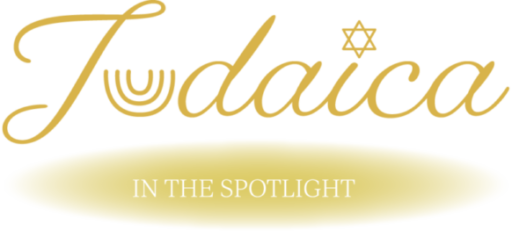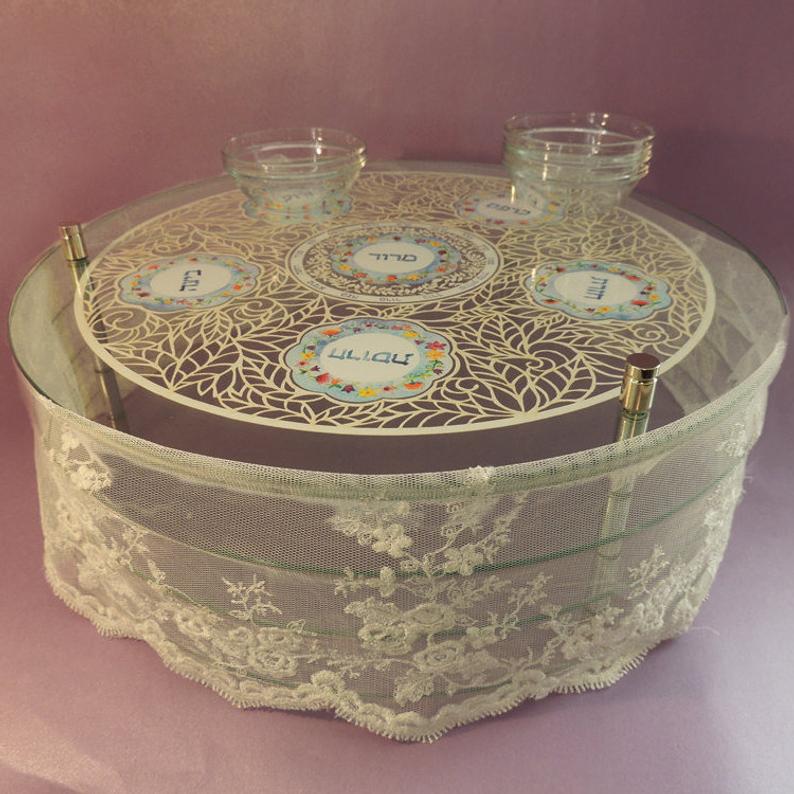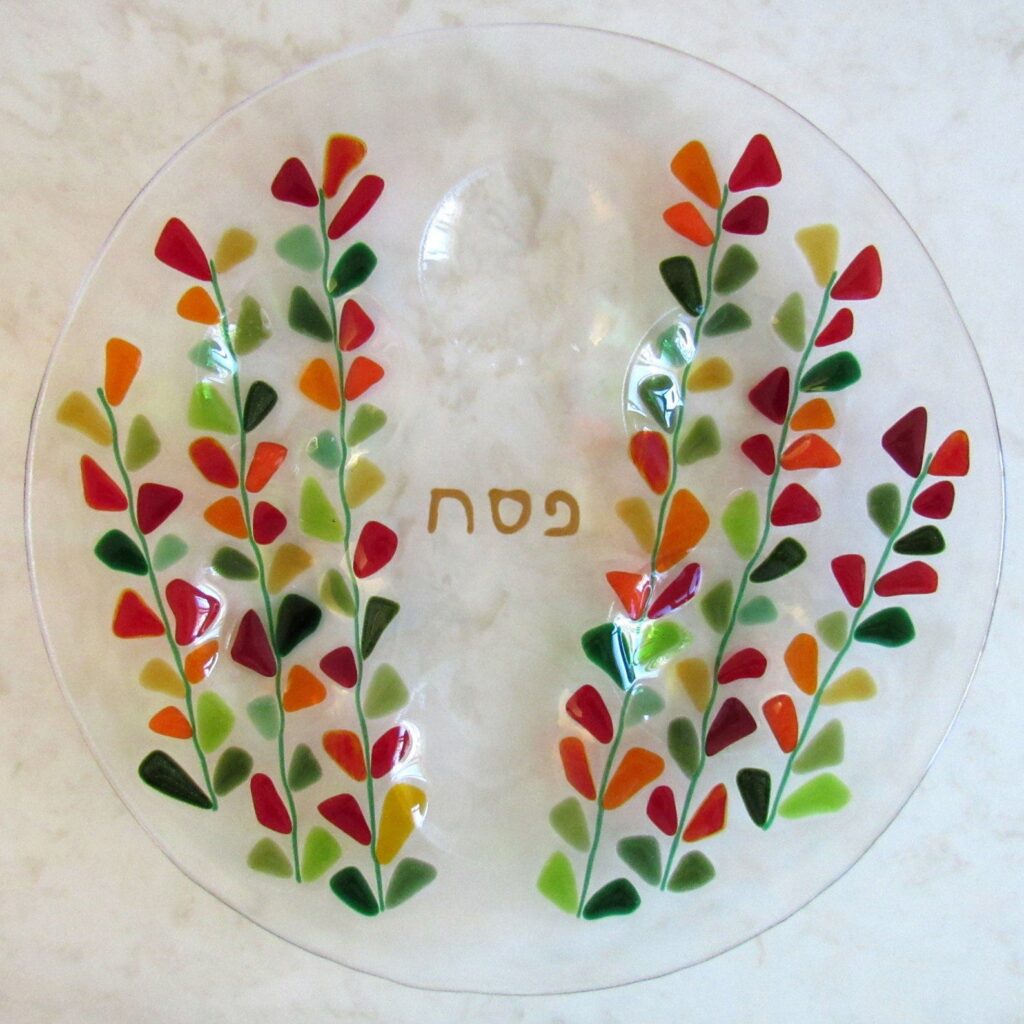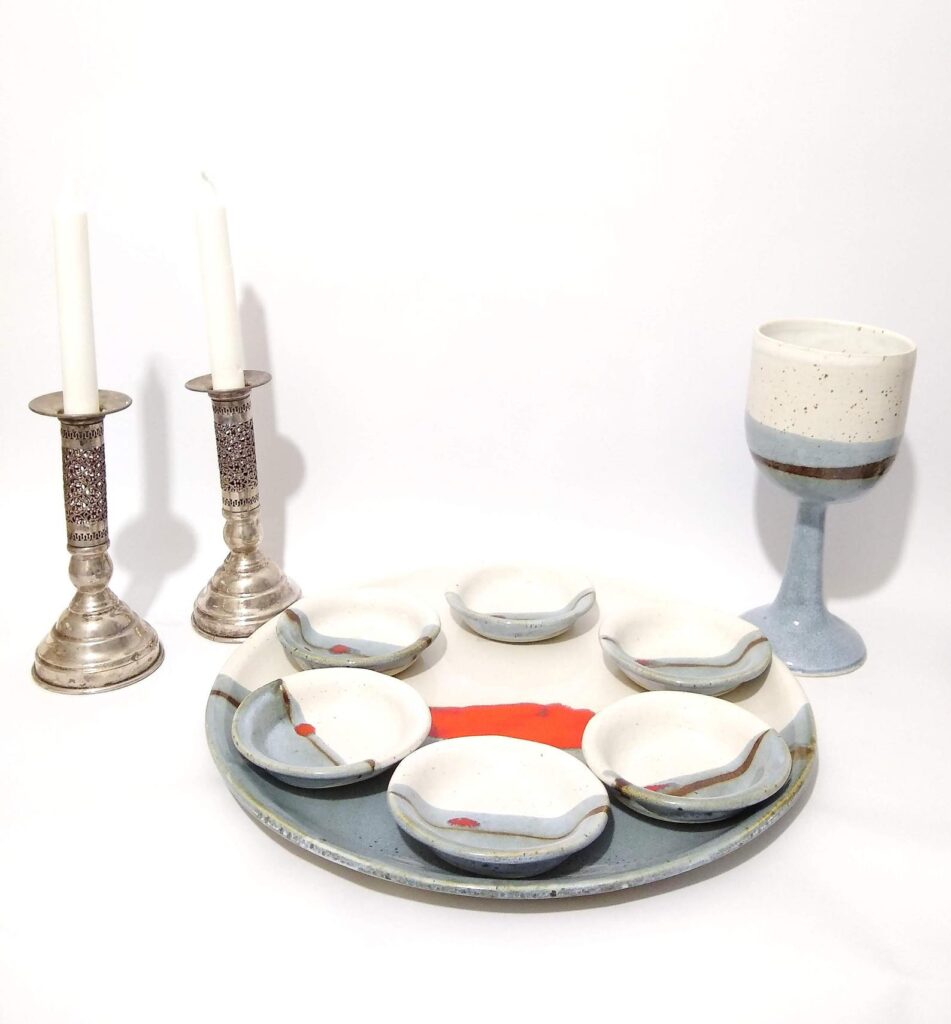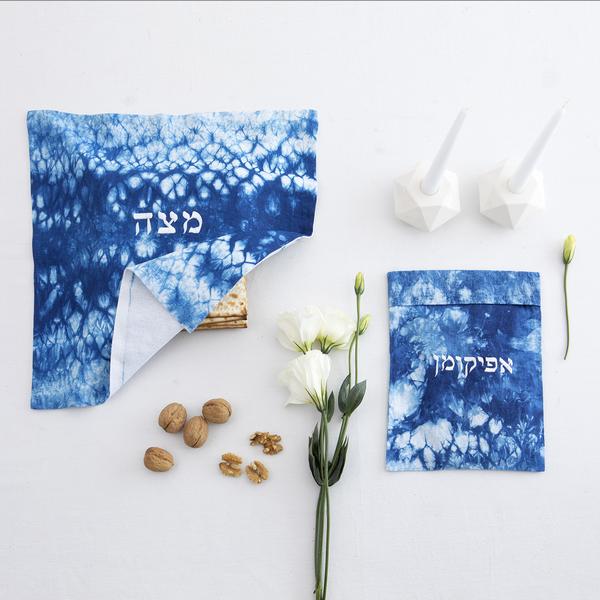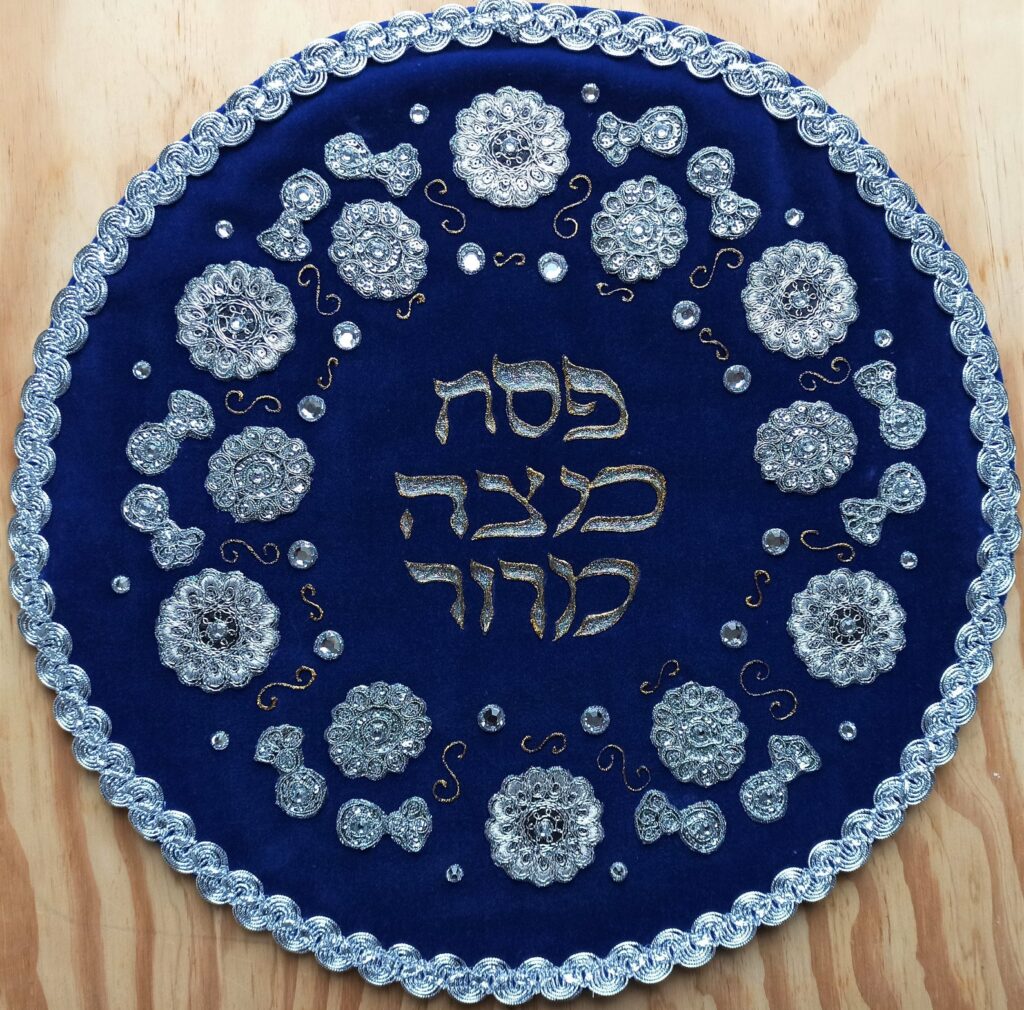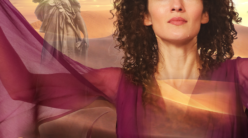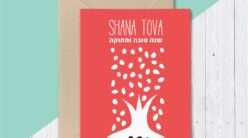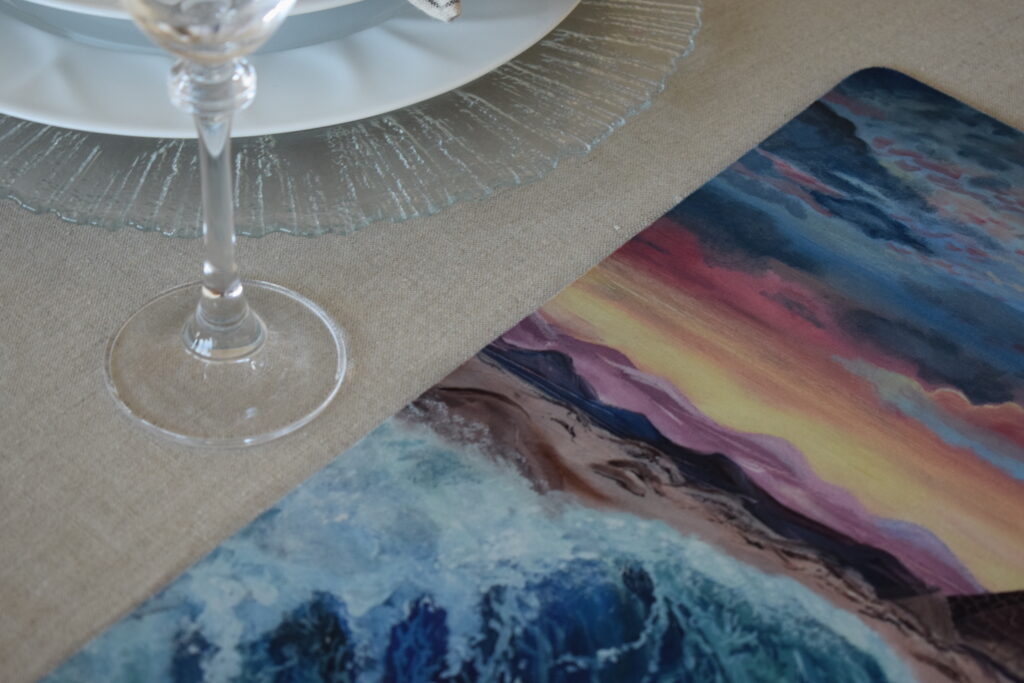
Photo: Courtesy of Judaica in the Spotlight
Table Runner created by Yael Harris Resnick
Table Linen created by Linen Home Décor
Judaism uses a Hebrew calendar that lists all the Jewish Holidays of the Jewish year. A Jewish calendar has Hebrew calendar months blended into our everyday calendar and has twelve months as well. The first month of the calendar begins in spring, when winter is no more, and the colors of nature are blooming vibrantly.
The first month is connecting us to the sacred holiday of Passover, which is observed around the Jewish world with the familiarity and closeness around the dinner table. It is an eight-day holiday where we recount the history, eat symbolic foods, follow our family’s traditions, and where customs are passed down to the next generation, with some new additions we have added ourselves.
Pinterest is a great resource to see people getting creative on Passover!
While families around the world gradually add some new traditions to their holiday tables, what does not change is the Passover message … to remember. We gather around the table with our loved ones and keep the connection to our Jewish roots alive, thriving year after year.
The overall theme is freedom and how that time in history from the Book of Exodus in the Torah Scroll, transformed what we are all able to do each year on Passover: to recline, share, be together and to be reminded we were given a chance with belief, faith, travels, struggles, and separations. Being led by the humble, but powerful, word called – connection.
We as a Jewish people connect to the story, tell it each year anew and celebrate it with an order on the first two nights of the holiday, which is called a Passover Seder.
The Seder is defined as Order and follows a specific one.
The Opening Prayer is this…
May all who are enslaved throughout the world, come to know freedom.
May all who are free, appreciate the blessings of abundance.
And may all of us dwell in the house of G-d and give thanks for our good fortune as we celebrate these rituals of Passover
Why is Passover celebrated around the dinner table?
Jewish holidays always begin on the evening preceding the first day of the holiday. The Hebrew calendar changes its day of the month at sundown, while the secular one at the stroke of midnight. Why you ask? Because Judaism uses a lunisolar calendar.
Why do Jewish communities around the world celebrate this significant holiday?
In biblical history, Passover has great significance. It is the first holiday that was instructed by G-d to the Israelites to be celebrated upon reaching the Promised Land. This concluded their forty-year journey through the desert-wilderness. And, to now practice all they have learned, which makes up the entire Torah scroll, which is read on a weekly basis around the world in many neighboring temples, synagogues and places of gathering. Including the most sacred space, the Western Wall, also called the Kotel, in Israel. Most people have heard of the Ten Commandments. This was the beginning of the first commandments. The first five connect to G-d, while the second five connect to family and people.
How is Passover celebrated?
The Passover Seder comes with an instruction manual, which is called a “Haggadah” in Hebrew. It tells the story, which is read by the person who leads the Seder. Most of the time though, the reading is divided between all of the people who gathered around the dinner table and are participating in the Seder.
There are many versions available of the Haggadah. Families have used their collections for years. One of the most famous ones was the Maxwell House Haggadah, and one of the more popular versions is the 30-Minute Seder. PJ Library has its own version for the children who receive their free Jewish themed books on a monthly basis.
The Center of the Table
The symbolic foods on the round Seder Plate displayed in the center of the table play an essential role in the Seder.
Passover is an interactive holiday where these foods are eaten by everyone around the table corresponding to each part in the Haggadah. All ages are involved!
The food tells the story. Many families follow the “Farm to Table” approach around Passover and cook with locally sourced produces in memory of the biblical story.
Judaism will always include signs of creation on holidays. The Seder Plate has six specifically designated spots for the various food items. It’s not a coincidence that there are six spots on the plate, the number six is a reminder for the number of days it took for the world to be created. They are often portrayed in a round shape for each year the holiday returns. The circle symbolizes the circle of life; from which generation to generation may learn.
40 + Seder Plates to Fall in Love With
Matzah!
The widely recognized unleavened bread is called Matzah! It replaces all bread products for the entire holiday of Passover. When people learned about this Passover custom for the first time, their feelings were mixed. No bread to be consumed for the eight-day long holiday?! For the ones learning the symbolism behind this tradition, it became more acceptable and welcomed.
Matzah is made from flour and water. Two of the main ingredients that are used to bake bread. What is not included in the recipe is the yeast, salt, and oil. It is still considered bread, while not sharing the appearance of the beautifully shaped loaves we can find at our local bakeries.
Why Matzah?
It all has to do with people not having enough time and packing their belongings as quickly as they could for they were afraid the gates would close and they would be left behind in Egypt. To never leave, to never feel free, and to never enjoy each and every day of their life frightened them to the core.
It was the bread they packed as part of their meal for that day, and maybe even the next few days ahead. Bread is something very delicate, something that needs time to rest, to rise. That is the job of the yeast you add. There simply was no time for this essential part of bread making. And this is the reason why on Passover we eat Matzah.
Matzah is a flat, dry, large looking cracker. Nowadays you can find a variety of Matzah of various tastes from plain to seasoned ones.
The best time to shop for Passover is the month of March. The supermarkets and specialty stores are already displaying their products and there are plenty to choose from! In April, the pickings are reduced and the shelves are somewhat empty. My advice to you is to shop early. Also, pay attention and notice the paper lining on the shelves under the various Passover products. It is symbolic to the separation of the holiday from the year round products that usually use the shelf space.

Photo: Courtesy of Judaica in the Spotlight
Upright Matzah Holder created by Artori Design
15 + Matzah Covers & Afikoman Bags
The Passover Menu
Passover can also be one of the best weeks to serve for what we would call the elimination diet. The foods are restricted depending on whether your family lineage can be traced back to Eastern Europe, and you are an Ashkenazi Jew, or to Spain, Portugal, North Africa and the Middle East, making you a Jew of Sephardic descent. If you are a Sephardic Jew, the foods are less restricted.
At Passover we eat many different vegetables and fruit. The reason herefor is that when the Israelites traveled through the desert-wilderness for forty years, they were being taught how to live independently, and to slowly be reintroduced to foods from the earth and how to appreciate them. They learned patience, will power, following instructions, guidelines, laws, and rules. As well as how to think of others, and to become accountable for their actions with blessings and consequences that affect others and themselves.
In terms of the other foods, it is about carbs and treats. Macaroons made from coconut and dipped in chocolate is a lot of fun to make and enjoy. Matzah meal is being used to make Passover specialty foods including the famous Matzah balls for soup. Matzah meal pancakes baked or cooked on the stove are another family favorite of many. Matzah Brie are pieces of matzah mixed with egg and cooked in a pan on the stove. It’s breakfast Passover style! You can find many recipes on the internet.
Wine!
Passover is the one Jewish holiday that gives you permission to drink four glasses of wine. It is quite amusing and entertaining at the same time. There are wines that are specifically made for the Passover holiday.
Maybe you have noticed that the holiday shows us how to separate the everyday routine of our lives for a brief moment. For those with school-aged children, the school is closed for the week. We follow a specific list of foods that are permitted to be eaten, while others are put aside. There are many opportunities to get creative in the kitchen on Passover!
Holidays bring us closer together, and following rituals even more so. They remind us not to forget our own history and show us that the beauty of Judaism and people gathering around the family or friend’s table to share what the earth has to offer us.
Remember, in the biblical story it took the people forty years to celebrate Passover.
Today, we set aside one week plus a day.
The greeting we say during the holiday of Passover comes from Yiddish, the conversational language used to communicate by our ancestors.
I wish you a Zisan Pesach. (zee-sahn pey-saach)
Have a sweet Passover.
Rabbi Andrea has built her brand as The Jewish Wedding Rabbi for all couples who are both Jewish, and for couples where one person or spouse-to-be is not Jewish. She conducts Jewish Wedding and Civil Ceremonies, including Elopements.Jewish, Interfaith, and Marriage Equality Couples, all are dedicated to their Jewish identity whether by birth or choice. It has been important for Rabbi Andrea to follow the motto to make all couples feel welcomed and embraced from the first conversation to their wedding day ceremonies. You can find her interview with us here.
